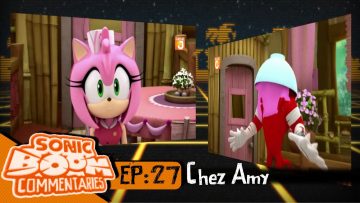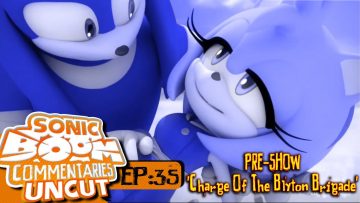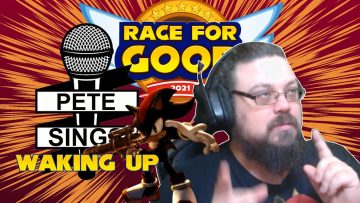
Review: Rodea the Sky Soldier (Wii & Wii U)
It is impossible to talk about Rodea the Sky Soldier without going into the long, weird history this game has. It’s been five years coming, so sit back, relax, and don’t worry — we’ll get to the review eventually. There’s just some important information to get out of the way, first.
When I think about the classic Sonic the Hedgehog games on the Sega Genesis, three big names come to my mind: Hirokazu Yasuhara (game designer), Naoto Ohshima (art director), and Yuji Naka (programmer, and eventually, president). All three of them left Sega many years ago, and none of them have found the same level of notoriety they had while they were working on Sonic. Yasuhara has spent the two decades since his departure bouncing around between Naughty Dog, Namco and Nintendo, whereas Ohshima’s post-Sonic-Team studio cooked up the failed Xbox pseudo-mascot Blinx the Time Sweeper. And Yuji Naka… he saw the writing on the wall and got out just before Sonic’s most notorious game dropped in 2006. Naka started his own indie development studio, PROPE.
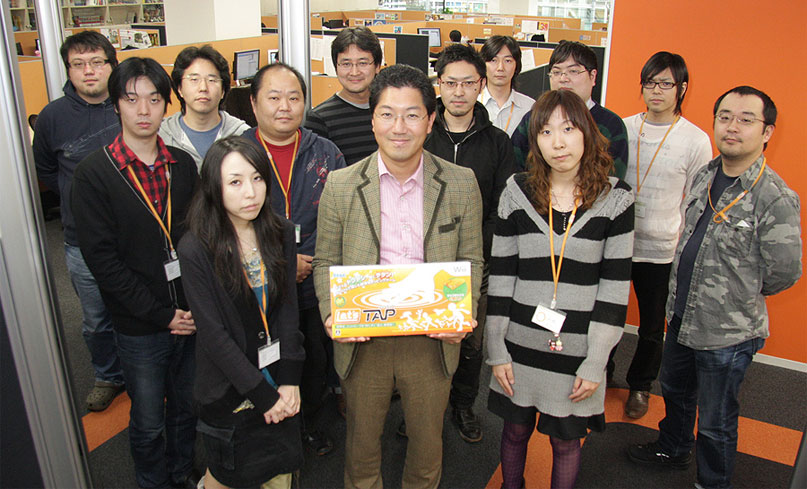
PROPE has never had a “hit” in so many words. They’ve largely stuck to smaller projects, mostly in the mobile space, occasionally venturing into deeper waters for games like Let’s Tap for the Wii and Ivy the Kiwi? for the Nintendo DS, the latter of which is so dull, I couldn’t even muster enough energy to write my review for it.
But they’ve never made a splash. There’s never really been that one game to define the company’s personality. They’ve never had their Sonic the Hedgehog; heck, they’ve never even had their Blinx the Time Sweeper. That wasn’t always the case: in 2010, PROPE announced a partnership with Kadokawa Games to produce Rodea the Sky Soldier for the Wii and the then-newly-announced Nintendo 3DS. This was PROPE’s biggest project yet, and a chance to leave their mark on the industry.
Rodea’s out now, after a tumultuous development. In the five intervening years, circumstances have changed: technically, Rodea is now releasing for Nintendo’s Wii U console in addition to the 3DS, and it is definitely not the game we were originally promised. Back when Rodea originally released last month, I put together a video talking specifically about this subject in particular:
Click Here to View This on Youtube
The short version: PROPE finished developing Rodea for the Wii four years ago, and their publisher, Kadokawa Games, took so long with their end of the bargain that they ended up porting their 3DS version to the Wii U. As a bonus for early-adopters, the very first production run of Rodea the Sky Soldier will come with the unreleased 2010 Wii version for free, which is fully-playable through the Wii U’s backwards compatibility.
You got all that?
The video should cover the basic differences between the Wii and Wii U versions of Rodea, but you should know that, for the bulk of this review, I played the Wii version of Rodea the Sky Soldier almost exclusively.
So now, finally, at last: how is the game?
The Wii version is good. It’s actually kind of a shame that Kadokawa Games dragged their feet for so long with Rodea, because this really would have been the game to put PROPE on the map.
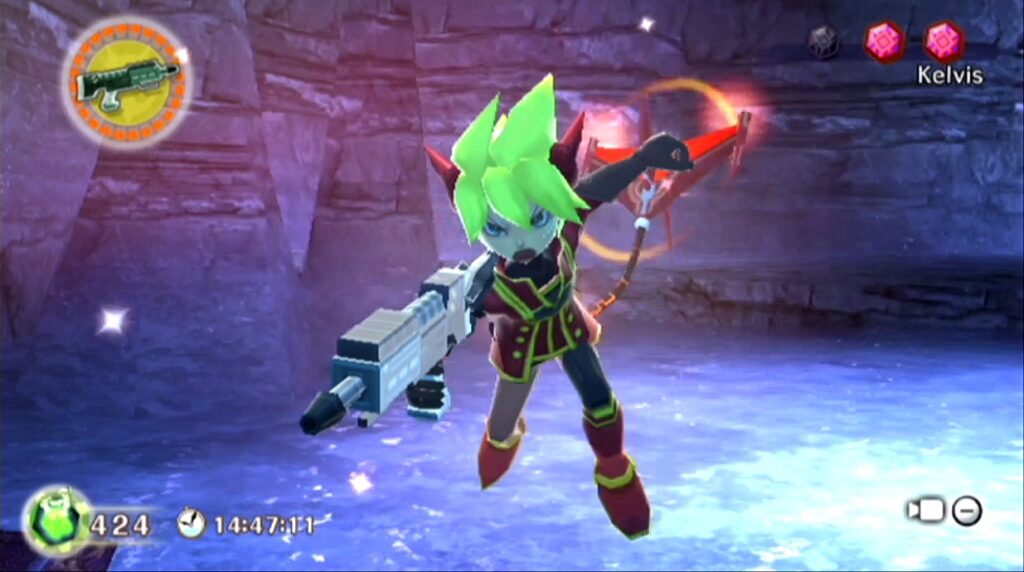
Rodea the Sky Soldier is almost like a lightgun game in some respects, similar to Time Crisis, House of the Dead, and so on. You aim at objects (be it a landmass or an enemy) and pull the trigger to shoot. The catch is that, instead of staying in a stationary position and shooting a weapon, you are physically shooting your own body, moving Rodea through the environment. It is incredibly simple to pick up and play; within only a few minutes, I was dashing around the sky world of Garuda like a pro.
Early on, it may even seem a little too simple, as Rodea the Sky Soldier gradually eases you into its game mechanics. Eventually it starts introducing new elements to test your aim, your ability to control the arc of Rodea’s flight path by flicking your wrist, and your timing. New power-ups get introduced as well, like boots that let Rodea skate across some surfaces, and a pistol to clear out enemies Rodea is not allowed to touch.
In general, the Wii remote controls work about as well as you’d hope. Motion control is an incredibly finicky thing to get right, but PROPE chose to base all of Rodea’s control on the simple act of aiming at the screen, something that was perfected in games decades ago. There is no trademark controller “waggle” to be found here, or spotty motion detection. It’s just simple, effective pointer control.
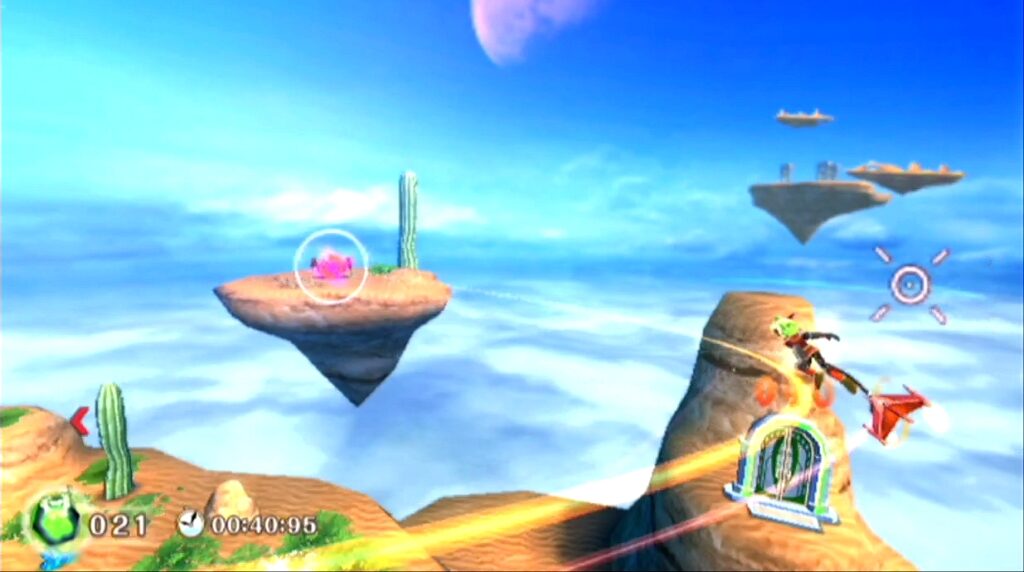
That’s not to say it’s all completely roses, though. Though flight is primarily your way to traverse these levels, you’re afforded the ability to walk around on the ground using the Wii remote’s cross-shaped d-pad. Doing this is incredibly awkward, and thankfully, you’re never actually forced to use it. Given that this is a game about flight, you can, and definitely should be flying everywhere.
Rodea’s biggest problem is camera control. You can rotate the camera by moving the crosshair to the edges of the screen, which generally works well enough… until you accidentally aim outside of the television’s range. If you’ve played a lot of games on the Personal Computer using a mouse, that muscle memory of being able to quickly whip your view around 180 degrees can work against you in Rodea. During stressful situations I was constantly pointing off screen, accidentally trying to get the camera to reposition itself too quickly. This becomes especially frustrating in a few of the game’s more compact spaces, where Rodea can get wedged between multiple objects and it feels impossible to reorient yourself. That being said, these situations were rare; Rodea the Sky Soldier seems to mostly understand its own limitations, and the bulk of the game’s levels take place in large, wide open spaces.
And it is in those two categories that Rodea the Sky Soldier for the Wii U sees its biggest benefits: adapted to work on a regular controller, both Rodea’s on-foot and camera controls are much easier to get a handle on, as they follow the standard operating procedure present in most other action games.
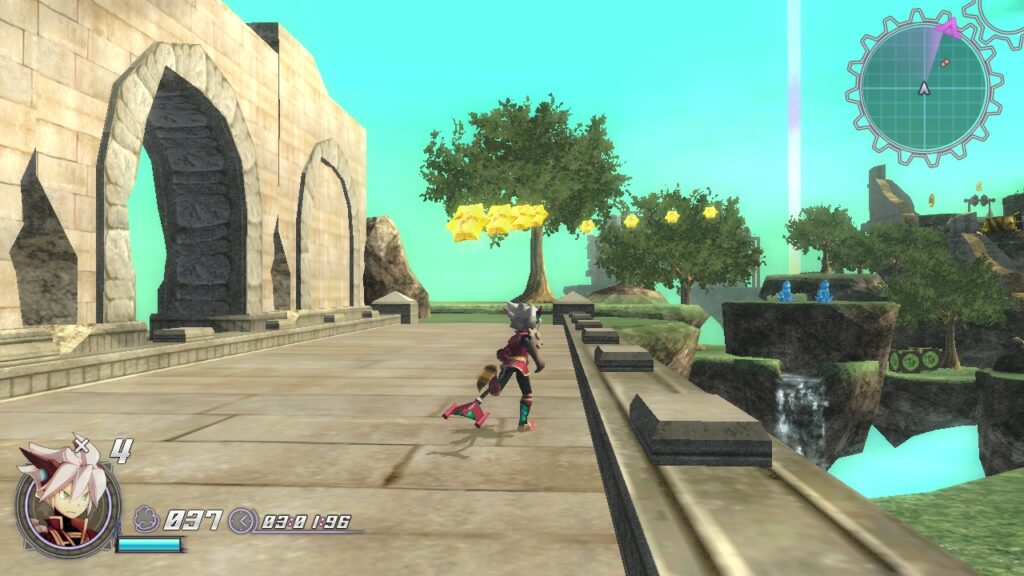
The problem with the Wii U version of Rodea is that we’re not dealing with most other action games. The 2010 Wii version of Rodea is fast and graceful, as you effortlessly soar through the skies and bounce between enemies. The 2015 Wii U (and by extension, 3DS) version of Rodea is sluggish, floaty, and awkward, forced to make compromises in order to get the game working in a format it was never designed to be played in. That’s not to say that the 2015 version of Rodea is entirely unplayable, and as the game ramps up its difficulty, the slower speed and lower gravity can help ease potential frustration. But there’s no denying that Kadokawa Games misunderstood what made Rodea the Sky Soldier special and the Wii U version unnecessarily suffers as a result.
The big question on my mind is whether or not Rodea the Sky Solder is Yuji Naka’s next “NiGHTS: Into Dreams.” Naka has gone on record to say he considers NiGHTS a “perfect game,” comparing his feelings to how Steven Spielberg feels about E.T.: The Extra-Terrestrial. In the years since NiGHTS saw re-release on Xbox Live Arcade, PlayStation Network, and PC, I’ve seen the game through the fresh eyes of my peers. Rodea the Sky Soldier is nowhere near as high concept or as artistically interesting as NiGHTS, but it is considerably easier to understand, and therefore considerably easier to play and enjoy. There is simply no other game like this out there, and I think it is definitely worth experiencing.
Just… maybe don’t bother trying to play the Wii U and 3DS versions.



![[ID: 2AmU16wY7i8] Youtube Automatic](https://lastminutecontinue.com/wp-content/uploads/id-2amu16wy7i8-youtube-automatic-360x203.jpg)
